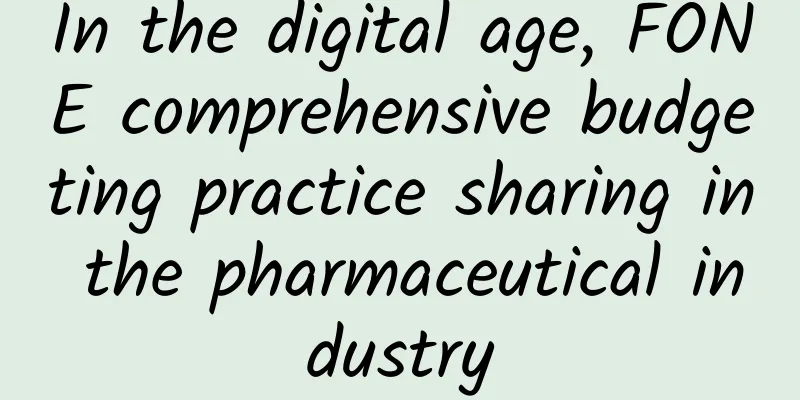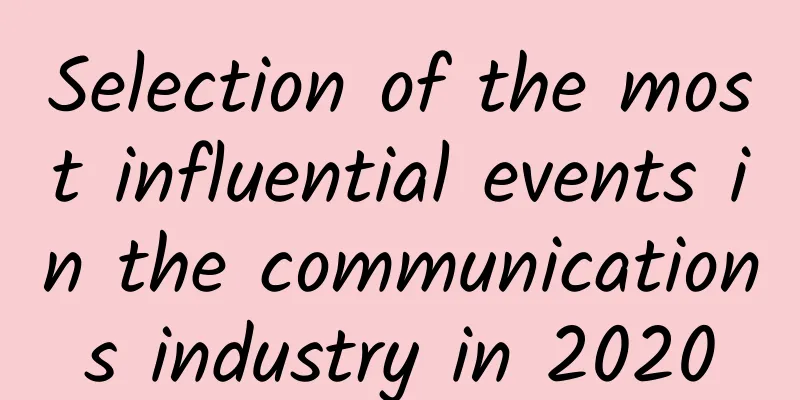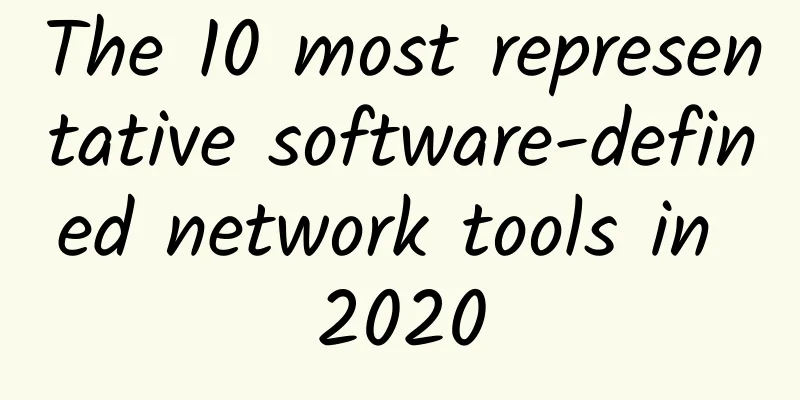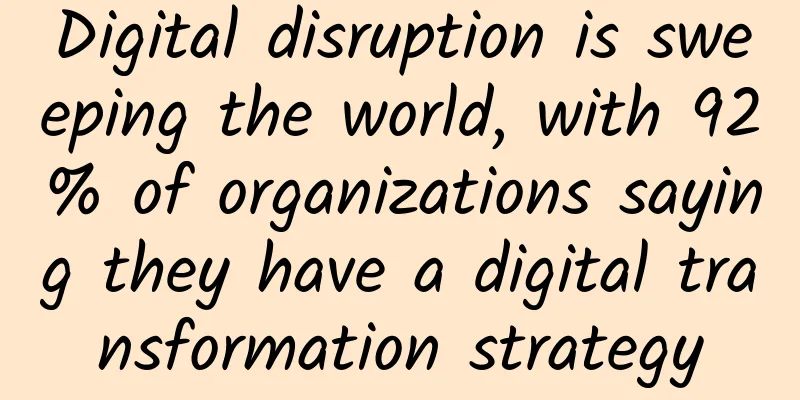In the digital age, FONE comprehensive budgeting practice sharing in the pharmaceutical industry

|
In recent years, the pharmaceutical industry has been undergoing rapid changes. On the one hand, with the continuous deepening of domestic pharmaceutical reform, the introduction of a series of policies such as the two-invoice system, generic drug consistency evaluation, and "4+7" volume-based procurement, cost control and price reduction have become the long-term direction of the pharmaceutical industry, and pharmaceutical companies are facing challenges such as slowing revenue growth and shrinking benefits. At the same time, negotiations on the medical insurance access of innovative drugs and the price reduction of imported drugs for inclusion in medical insurance have squeezed the domestic innovative drug market space. Pharmaceutical companies are facing global competition and their R&D investment continues to increase. How to improve the efficiency of enterprise operations, reduce costs and increase efficiency will become the main theme of the pharmaceutical industry for a long time in the future. As a management tool for corporate business strategies, comprehensive budgeting is a key means for enterprises to seize opportunities and control the market, and therefore has become an area of focus for pharmaceutical companies in business management. The comprehensive budget of pharmaceutical companies faces three major challenges under the trend of business and finance integration Although comprehensive budget management plays a vital role in corporate development, it is full of challenges in its implementation. From the perspective of organizational structure, most pharmaceutical companies are group companies with large scale, cross-regional or cross-national markets, many subsidiaries, complex and closely connected internal structures, rich product lines and diverse sales models. This leads to multiple scopes and long cycles for pharmaceutical companies to prepare comprehensive budgets. At the same time, since budget targets are broken down and summarized at multiple levels, involving collaborative communication among multiple departments, the difficulty of comprehensive budget process management is increased. From the perspective of the market environment, pharmaceutical companies are facing fierce market competition due to policy supervision, market fluctuations, etc. In order to enhance the competitiveness of the industry, pharmaceutical companies have generally increased their investment in R&D and sales expenses. However, due to the long R&D cycle, high capital investment, high failure rate, and great uncertainty in terminal penetration and marketing expenses, how to control the risks of business links through comprehensive budgeting and improve operating efficiency has also become a major problem for pharmaceutical companies. From the perspective of industry trends, corporate financial management is transforming towards refinement, informatization and intelligence, and business-finance integration has become the general trend of comprehensive budget construction for enterprises. How to undertake corporate strategic goals and execution through comprehensive budgeting, integrate financial and business data, and effectively guide corporate development and operating performance also tests the ability of enterprises to innovate in technology and management. FONE's comprehensive budgeting product helps pharmaceutical companies implement their business strategies In the past, pharmaceutical companies mainly used Excel or custom-developed budget information systems for comprehensive budgeting. These traditional tools cannot meet the challenges faced by pharmaceutical companies in comprehensive budgeting in terms of full-process data acquisition, business and financial data integration, high-concurrency data calculation, and multi-dimensional data analysis. The finance department can often only obtain business data after the fact and then organize and analyze it, which brings lags to the company's management and decision-making. Nowadays, driven by digital technology, the new generation of EPM can analyze financial and business data in real time and reversely plan and adjust business, becoming the most effective tool for the integration of corporate strategy, business and finance. As a leading financial and business integrated planning and analysis platform service provider in the domestic EPM field, FONE (Shanghai Yiwei Software System Co., Ltd.) launched a comprehensive budget product FONE Planning, which can well solve the various pain points of traditional budget tools and truly realize the implementation and execution of corporate strategic goals. Since its establishment in 2015, FONE has continued to invest a lot of R&D resources in product development. Through its self-developed M-OLAP (real-time online computing engine), it has broken through the performance boundaries of Excel and traditional EPM products. It has powerful data processing capabilities in terms of large data volumes and high concurrent user access, real-time calculations, synchronous data reading, writing and complex logical calculations, allowing enterprises to have an efficient and flexible experience in later use and expansion. During the budget target setting stage, FONE Planning uses data as a basis to enable pharmaceutical companies to scientifically formulate business goals and avoid blindly setting goals. FONE Planning supports both the group's downward decomposition of goals and the subordinate units' upward aggregation of goals. It can simulate and deduce the results of various business lines such as sales, R&D, and production, and different operating plans based on historical data and external market data, and plan annual goals based on predicted values and adjusted values. During the budget preparation stage, FONE Planning can obtain full-process data in real time, greatly improving the efficiency and quality of budget preparation for pharmaceutical companies. When breaking down and executing goals, FONE Planning can break down the group's annual goals into subsidiaries, channel divisions, and product lines based on business logic and organizational structure, and break down the entire budget preparation process into individual reporting and approval tasks, assigning them to each responsible person, and checking the budget preparation progress in real time, thereby simplifying cross-departmental communication and collaboration under multiple organizations, greatly improving the efficiency of budget preparation, and shortening the budget preparation cycle. Since the underlying layer of the FONE system is built on a multidimensional data warehouse, all business data attributes can be abstracted into dimensions, automatically forming cross-reference relationships, summary relationships and data retrieval formulas between tables, and establishing the correlation between business data of each department. Therefore, manual settings are no longer required, further improving the efficiency of budget preparation. When the business department submits the budget, FONE Planning can also automatically verify whether the data submitted is accurate and standard, ensuring that the budget data submitted by each department complies with the regulations and reducing the time for communication and explanation. Compared with traditional Excel summaries or data exports from ERP systems, FONE Planning can provide a variety of ERP standard data interfaces such as SAP, UFIDA, Kingdee, and Inspur. It is compatible with SQL and NoSQL databases such as Oracle, SQL Server, MySQL, MongoDB, and Hive, as well as big data systems. It can easily unify the group's data caliber, realize data integration throughout the entire process, and improve data accuracy. During the budget analysis phase, FONE Planning develops multi-dimensional analysis applications for different business lines, including sales, production, and R&D, from the executive level to the management level, to meet the refined data analysis needs of pharmaceutical companies. For example, FONE Planning can drill down from summary figures to detailed figures, and can also look at the business status of the company from multiple dimensions such as business attributes, products, regions, and distributors. It can also perform comparative analysis such as pre-actual analysis, year-on-year analysis, and quarter-on-quarter analysis. During the budget control stage, FONE Planning can achieve full-cycle budget control before, during and after the event, helping pharmaceutical companies to adjust their business strategies in a timely manner based on actual conditions. Before the event, FONE Planning verifies expenditures, integrates with various expense control systems and OA approval systems of pharmaceutical companies, and issues early warnings for parts that exceed the budget. During the event, through traffic light warnings, the progress of the operation, production, and R&D indicators of each subsidiary/department is timely grasped, so that the company can adjust its business strategy according to the actual situation. Afterwards, the budget and actual figures of each business unit are compared and analyzed to formulate the business strategy for the next year. At the same time, FONE Planning supports custom rolling models, which can make rolling forecasts on a monthly, quarterly and other cycle basis, and make additions and subtractions based on the budget data of the previous version without having to start from scratch, so as to adjust business strategies in a timely manner and ensure the achievement of annual goals. Leading pharmaceutical companies use FONE to upgrade their comprehensive budget management system Today, FONE has served a number of world-renowned pharmaceutical companies, helping them to comprehensively upgrade their budget management systems, achieve full business process management, significantly improve budget preparation efficiency, and meet the company's needs for refined management. Take Daiichi Sankyo as an example. As a global multinational company, Daiichi Sankyo has formed a relatively complete industrial chain from R&D, production, sales to commercial operations. It has continued to deepen its efforts in medical reform and pharmaceutical health care, and its management needs for production and operation plans are also increasing. Daiichi Sankyo has production bases in Beijing and Shanghai, focusing on product production. In the more than 30 years in China, Daiichi Sankyo has not only faced the need to adapt to China's local policies and flexibly adjust its business strategies, but also faced the challenges of integrating cross-border businesses and communicating and cooperating internally. Another company facing similar challenges as Daiichi Sankyo is Hengrui Medicine. As a multinational company engaged in pharmaceutical innovation and high-quality drug research and development, production and promotion, Hengrui Medicine has many subsidiaries scattered around the world and a complex organizational structure. In the past, most of Hengrui Medicine's budget work was completed by finance, and there was a lack of connection with business data, which led to a gap between strategy and goals, irregular resource allocation, lack of process control, and low connection between research, production, supply and sales. It was difficult to continuously adjust, analyze, predict and evaluate the budget, and it was impossible to make systematic plans for operations. In order to promote the integration of finance and business and enhance the ability of refined operations, Hengrui Medicine adopted FONE to build a unified comprehensive budget management platform, which enables the comprehensive preparation and approval of capital budgets, expense budgets, and project budgets, as well as the differentiation of attributes of different cost centers, cost sharing, and multi-dimensional profit and loss management. At the same time, FONE helped Hengrui Medicine clarify the budget responsibility subject, the coexistence of management and legal person structures, and realized the automatic issuance of two sets of structure reports based on one set of compilation data. Multi-dimensional analysis was carried out on the basis of business and financial integration, and monthly/quarterly rolling forecasts and flexible budget control were realized, which strengthened the management and guidance responsibilities of the headquarters functional departments over subordinate units. FONE launches industry budget template to create best practices for the pharmaceutical industry Based on its powerful computing performance and multi-dimensional analysis capabilities, FONE is helping more pharmaceutical companies improve the efficiency and quality of budget preparation and enhance the value of data. At present, FONE has accumulated and precipitated industry best practice solutions that empower finance and help implement corporate strategies in the process of serving well-known pharmaceutical companies such as Hengrui Medicine, Fuhong Hanlin, and Daiichi Sankyo. Based on the best practices in the pharmaceutical industry, FONE Market Place was launched. FONE Market Place creates out-of-the-box R&D budget and sales budget industry templates based on business scenario refinement and standardization, thereby helping pharmaceutical companies to quickly implement industry best practices and upgrade refined budget management. Through business scenario refinement and data application, it empowers business and finance and reduces the cost of building an enterprise information platform. Taking the R&D budget model of the pharmaceutical industry as an example, from the perspective of the R&D cycle, innovative drug research generally goes through four stages from start to finish, lasting about 12 years. Project failure or interruption may occur at each stage of drug R&D. In order to better manage R&D projects and control risks, the pharmaceutical R&D budget model designed by FONE runs through the entire life cycle of R&D management. In the R&D budget stage, there are many key elements, such as R&D pipeline, indication field, treatment field, R&D stage, R&D cycle, funding source, estimated total investment, estimated R&D progress in the current year and the next year, etc. Therefore, FONE uses multi-dimensional modeling in the R&D budget, subdividing the R&D pipeline, indication field, treatment field, and R&D funding source, and according to the characteristics of each R&D stage, refining the business scenarios and R&D expenditure composition, and conducting lean compilation of R&D expenditures that are the focus of the R&D stage. In terms of R&D progress, FONE specifically considered the management of R&D progress in the model design, linking the R&D plan progress with the R&D progress of the budget year in order to track the R&D progress. For the public expenses incurred during the R&D process, FONE sets different allocation methods based on the project management characteristics and expense attributes of different R&D stages, and summarizes R&D expenses by project, stage, and R&D pipeline. According to the regulations of the pharmaceutical industry, R&D expenses are automatically capitalized during the Phase II or Phase III clinical R&D stage to form capital expenditures. In the R&D analysis phase, FONE has realized multi-dimensional and multi-caliber analysis of the R&D expenditure structure and R&D project progress that managers are concerned about. For example, the plan-to-budget ratio and budget-to-actual ratio are used to analyze the deviation of R&D progress at different R&D stages, and industry standard data is collected at the same time to compare the R&D progress with the industry standard. In addition, the industry template also provides business indicator analysis in R&D management, such as NDA, FDA application approval rate, technology investment ratio, clinical recruitment capacity, etc. As you can see, FONE's pharmaceutical industry budget solution template has strong industry attributes, allowing pharmaceutical companies to use it out of the box, achieve rapid delivery and implementation of EPM projects, and reduce system construction costs. Budget personnel only need to make minor adjustments to the industry solution template provided by FONE to meet the personalized needs of the enterprise, and no longer need to spend a lot of energy and time designing solutions, configuring budget indicators, dimensions, and calculation logic. In the process of continuous product iteration, FONE has made the complexity of comprehensive budgeting invisible. Conclusion In the ever-changing market environment, more and more pharmaceutical companies are beginning to adopt digital means to transform corporate management. The new generation of EPM software represented by FONE Comprehensive Budget is becoming an ideal digital tool for pharmaceutical companies to achieve integrated and refined financial management and implement corporate strategies and execution. |
<<: Wi-Fi 6 deployment exceeds 5G, will Wi-Fi 6 become the next generation of wireless network?
>>: Wi-Fi 6 Release 2 new standard released: faster upload, lower latency, more energy-efficient
Recommend
Sketch of China's Government Cloud Industry in 2017
[[188315]] [51CTO.com original article] In the ne...
Private 5G and edge computing: a perfect match for manufacturing
Private 5G is the next evolution of networks for ...
Communication module, why is it so popular?
In recent years, with the rise of mobile communic...
Breaking the shackles of proprietary systems: the open path to 5G networks
As technology continues to change, the era of pro...
HostingViet: Vietnam VPS annual payment 40% off, 2GB/20G SSD/unlimited traffic/annual payment starting from 190 yuan
HostingViet has launched a promotion for the firs...
Remember who was to blame for a thread pool-induced fault?
This article is reproduced from the WeChat public...
Insight into the real mobile user experience of the "12344" of Borei Data App 3.0
【51CTO.com original article】 Nowadays, our daily ...
Regular end-to-end encryption may not be that secure
[51CTO.com Quick Translation] Is the messaging pl...
SDN reshapes enterprise networks and changes the role of network managers
We have seen that many operators have significant...
AlphaVPS: €3.5/month-2GB/15G SSD/1TB/5 data centers including Los Angeles and New York
AlphaVPS is a Bulgarian hosting company, founded ...
Seamless broadband experience: Unleashing the power of network services and infrastructure
Importance of Network Services Network services p...
Let’s talk about 5G this year
Time is like quicksand, and the 2010s are about t...
What is DNS and how does it work?
The Domain Name System (DNS) is one of the founda...
Halfway through 2021, China Broadcasting and Television 5G begins to accelerate
2021 is already halfway through, and China Radio ...
HTTP request headers - the basics you need to remember
Introduction Usually HTTP messages include reques...









